
 |
 |
|
| About Us |
|
Read Past Issues | Resources | Composer Links |
|
On the Transmigration of Souls
|
|
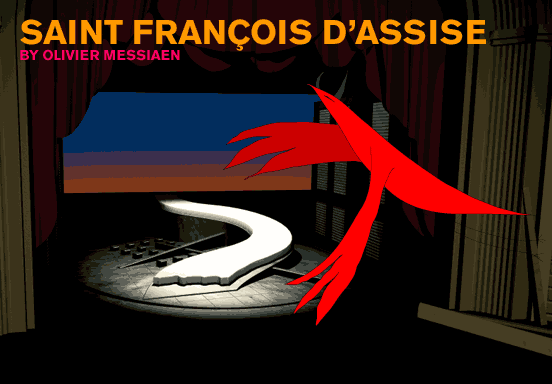
Saint François d'Assise Debuts At San Francisco Opera This Week Since it premiered in Paris in 1983, Olivier Messiaen's Saint Francois d'Assise has developed a reputation for being one of the great operas of the 20th century although not a whole lot of people have actually seen it. On Friday, two decades later, the San Francisco Opera will present the U.S. stage premiere. The combination of Messiaen and St. Francis of Assisi would seem to be one of those pairings made in heaven. Messiaen devoted much of his music to exploring his own faith, and many of his works use birdsong as an emblem of the beauty and divinity of nature. The story of Francis's preaching to birds combines the major themes of Messiaen's life and music. This is not a conventional, narrative-driven opera but, as Messiaen explained it, eight scenes that show the different aspects of grace in Saint Francis's soul. Setting his own libretto, Messiaen's three acts play for nearly five hours. Throw in extravagant orchestration - three ondes martenots distributed around the hall - and fully staging the piece becomes an enormous and expensive undertaking. Which, of course, is why it has taken to so long to reach these shores. Perhaps inspired by the success of an unstaged performance at the 1998 Salzburg Festival, the San Francisco Opera has taken on the sizeable task of presenting U.S. stage premiere of Messiaen's masterpiece. The new production, which will run for six performances at the War Memorial Opera House, has been three years in the making and represents the largest commitment — both in terms of artistic and financial resources — that the company has ever made. Saint Francois is the first new production conceived and mounted under the the new general director Pamela Rosenberg.
|
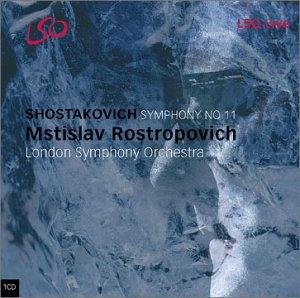
Symphony 11: The Year 1905 Composer: Dmitri Shostakovich Performers: Mstislav Rostropovich, London Symphony Orchestra Lso Live - #30 How many ways can you spell superb? From the tortured beginning to the shattering climax, Rostroprovich maintains a sense of rising foreboding and menace that inspires a cold sweat in the careful listener. This is one of those live performances that concertgoers tell their friends about years later. Symphony 11 is rarely mentioned in the list of Shostakovich's greatest orchestal works. This recording may change that. The LSO has never sounded better or more Russian. Surefire Gramophone winner. |
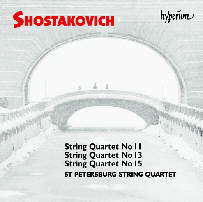
String Quartets 11 13 & 15 Composer: Dmitri Shostakovich Performers: St. Petersburg String Quartet Hyperion - #67157 More
spectacular music from Russia's tormented genius, superbly played. The
11th Quartet breaks from the more traditional four-movement structure,
and comprises seven separate short movements thematically unified
by a sequence of phrases introduced at the beginning of the first movement.
The 13th is the only single-movement quartet in Shostakovich's output.
|
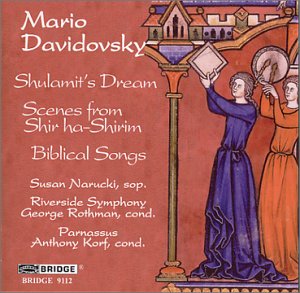
Shulamit's Dream; Scenes from Shir ha-Shirim: Biblical Songs Composer: Mario Davidovsky Conductor: George Rothman, Anthony Korf Performer: Susan Narucki, Mark Bleeke, et al. Bridge - #9112 Commissioned by the San Francisco Symphony in 1993 and given its New York premiere by Susan Narucki and the Riverside Symphony at Tully Hall in 2000, Shulamit's Dream is a suprisingly lyrical, “quasi-rhapsodic” setting of The Song of Songs by the Argentine-born Davidovsky, who came to the U.S. about 45 years ago and became a pioneer composer of electornic music. |
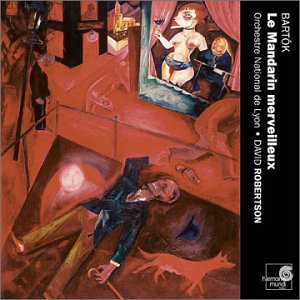
The Miraculous Mandarin Composer: Bela Bartok Performer(s): Robertson, Orchestre National De Lyon Harmonia Mundi Franc - #901777 This
is billed as the world premiere
|
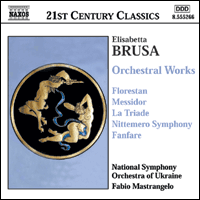
Orchestral Works Composer: Elisaetta Brusa Performer(s): Mastrangelo, Nat'l So of Ukraine Naxos - #8555266 Call it Neo-Tonal or Neo-Romantic, Brusa's pieces for orchestra break no new ground but they have a kind of formal academic elegance that seems more German than Italian in temperament but demonstrates a lively, intelligent mind at work. |
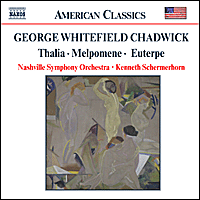
Orchestral Works Composer: George Whitefield Chadwick Performer: Schermerhorn, Nashville Sym Orch Naxos - #8559117 Chadwick is considered the first composer of concert music whose works often show the snap, the wit, the independence of the American spirit. During his career, he modernized the New England Conservatory, taught several generations of American composers, and was a pioneer in making professional instruction available to women and racial minorities. Terrific performances from the first-rate Nashville Symphony. |
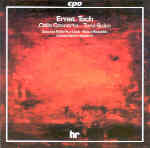
Cello Concerto Composer: Ernst Toch Mutare Ensemble, Muller-Hornbach Cpo Records - #999688 cpo continues to make the case for Toch as a neglected modernist master whose serious work was obscured by his success as a Hollywood film composer. Most of releases is this series have been convincing but this one is somewhat disappointing. The Cello Concerto goes off in too many directions and could have used a good editing. Plus, the sound quality on this recording is strange. Can't put my finger on it, but it's strange.
|
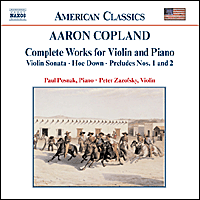
Complete Works for Violin & Piano Composer: Aaron Copland, Posnak, Zazofsky Naxos - #8559102 Copland is most known for his ballets and grand orchestral pieces but he often used small chamber works as building blocks to larger concepts. Most interesting here are the arrangements for violin and piano for well-known pieces of Rodeo and Billy the Kid. |
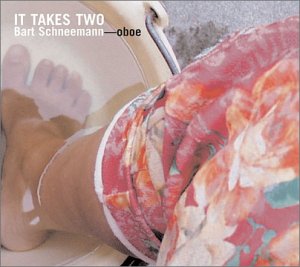
It Takes Two Performer(s): Bart Schneemann Channel Classics - #18598 Have oboe, will travel should be Bart Schneemann motto in this delicious set of duos with some of the world's finest musicians on instruments ranging from the clarinet and the viola to the marimba and the bandoneon. The composers are brand names all--from Andriessen and Bartok to Piazzolla to Vanghan Williams. Most inventive. Our personal favorite of the month. |
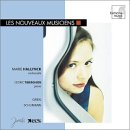
Cello Sonata / Cello Works Composers: Schumann, Grieg Performers: Marie Hallynck, Tiberghien Harmonia Mundi Franc - #911779 Harmonia mundi's Les Nouveaux Musiciens features the young Belgian/French cellist Marie Hallynck in stunning accounts of Schumann' s "Adagio and Allegro," "Phantasienstke," and "Funf Stucke im Volkston" for cello and piano, as well as Grieg's "Sonate Pour Violoncelle et Piano." Our kind of easy listening. |
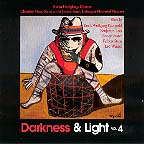
Darkness & Light 4 ComposerPerformer(s): Weiner, Starer, Stern, Korngold, Lees, Holt Albany Music Dist. - #518 The latest release from the Chamber Music Series at the United States Holocaust Memorial Museum is highlighted by the stunningly original "Piano Trio No. 2 "Silent Voices" (1998) by Benjamin Lees. Anguished and almost unbearably intense, Lees crams more drama, passion and empathy into this 14-minute piece than many composers muster in a lifetime. |
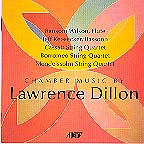
Chamber Music Composer: Lawrence Dillon Cassatt String Quartet, Borromeo String Quartet, Mendelssohn String Quartet In 1985, Lawrence Dillon became the youngest composer to earn a doctorate at the Juilliard School. He studied privately with Vincent Persichetti, and in classes with Milton Babbitt, Elliott Carter, David Diamond and Roger Sessions. Upon graduation, he was appointed to the Juilliard faculty. He is currently Assistant Dean at the North Carolina School of the Arts where he is also Composer-in-Residence and conductor of the contemporary music ensemble. The three pieces recorded here might be considered genre-bending in that they attempt to blend elements of post-modernism and older forms like romanticism. |
 |
Publisher: Duane Harper Grant (212) 582-4153 Editor: Jerry Bowles (212) 582-3791 Contributing Editor: Deborah Kravetz (C) Sequenza/21 LLC 2000 |
 |
Search WWW Search www.sequenza21.com |